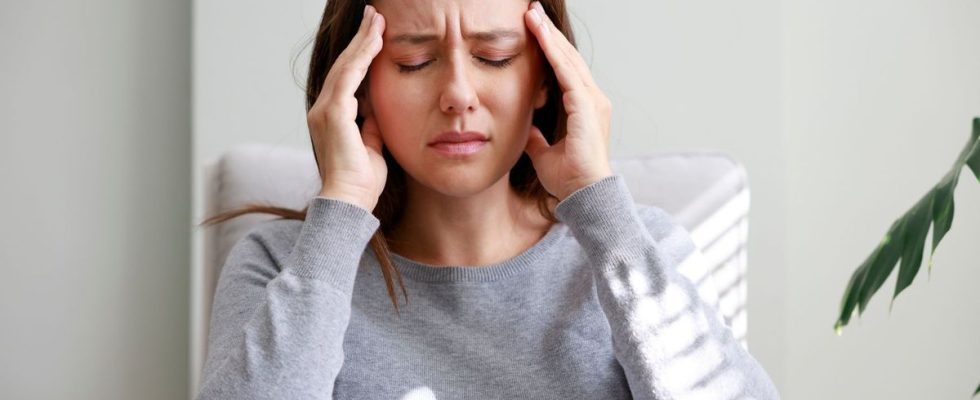Published on
Updated
Reading 3 mins.
According to new American analyses, the symptoms of migraine and cluster headaches are often governed by the body’s internal clock or circadian system. A discovery that could affect the taking and effectiveness of a treatment.
Do your migraines and headaches always start at the same time of day? This may not just be an impression, but a reality. New research based on a meta-analysis has recently demonstrated a solid biological reason for this phenomenon in relation to the body’s internal clock, called the circadian system. The researchers thus confirmed that migraine and so-called “cluster” headaches often follow the circadian rhythms of the body.
The majority of headaches are related to the circadian rhythm
The relevant meta-analysis included all available studies on cluster headache and migraine that included circadian features. This included information on when headaches occur during the day and during the year, as well as studies to determine whether genes associated with the circadian clock are more common in people with these headaches.
The researchers also looked at studies on cluster headaches, migraine, and hormones related to the circadian system, including cortisol and melatonin.
For cluster headaches, the meta-analysis revealed a circadian pattern of headache attacks in more than 7 out of 10 people who suffer from it.
The attacks generally peaked late at night until the early hours of the morning. During the year, people also had more attacks in the spring and fall. Also genetically, timing seems to play a role: cluster headache was associated with two major circadian genes, and five of the nine genes that increase the likelihood of having cluster headache are genes with a circadian expression pattern. People with cluster headaches also had higher cortisol levels and lower melatonin levels than people without cluster headaches.
For migraine, the meta-analysis showed a circadian pattern in 50% of people, or one in two. The peak of attacks for these occurred during the day, ranging from late morning to early evening. On the other hand, at night, few attacks occurred. Migraine was also associated with two major circadian genes, and 110 of the 168 migraine-associated genes were genes with a circadian expression pattern. People with migraine had lower levels of melatonin in their urine than people without migraine. Additionally, melatonin levels were lower during a migraine attack
New data to better design a treatment
Knowing why violent migraines and headaches appear with a certain regularity is interesting in practice.
“These results increase the potential for using circadian rhythm-based treatments for headache disorders”said study author Mark Joseph Burish, of the University of Texas at Houston in Texas and a fellow of the American Academy of Neurology. “This could include both treatments based on this circadian rhythm – like taking medications at certain times of the day – and treatments that cause circadian changes, which some medications can do.”
These potential new forms of treatment could use already proven compounds: steroids and melatonin, both of which affect the body’s circadian rhythms. It remains to determine the dose and time of intake in the light of the results of this study.
The importance of respecting your biological clock
The other lesson of this study lies in the need to take better care of one’s circadian rhythm. A disturbed internal clock can have negative impacts on fatigue, mood disorders and health problems such as obesity, diabetes and cardiovascular disease. To synchronize this, the researchers invite people to:
- Maintain a regular bedtime and wake-up time;
- Expose yourself to sunlight during the day;
- Avoid blue light from screens before bedtime or at night;
- To exercise ;
- Limit caffeine and alcohol consumption, especially in the evening.
A program that will not make your headaches disappear as if by magic, but which nevertheless allows you to maintain a restful and regular rhythm, beneficial to your body and your health.
